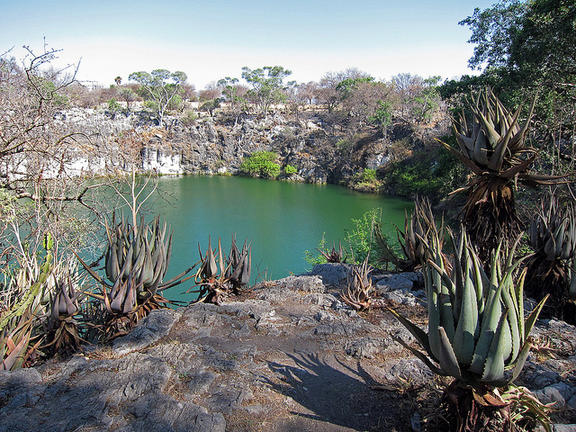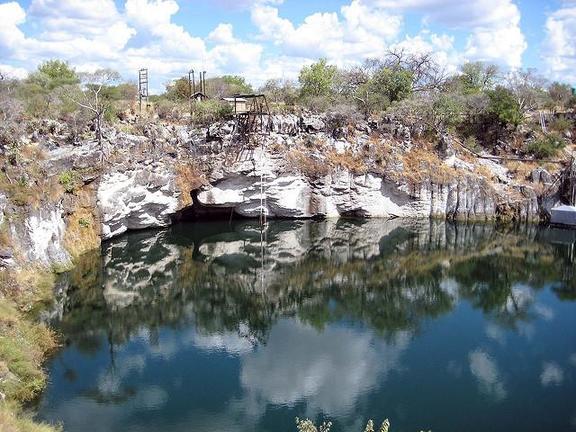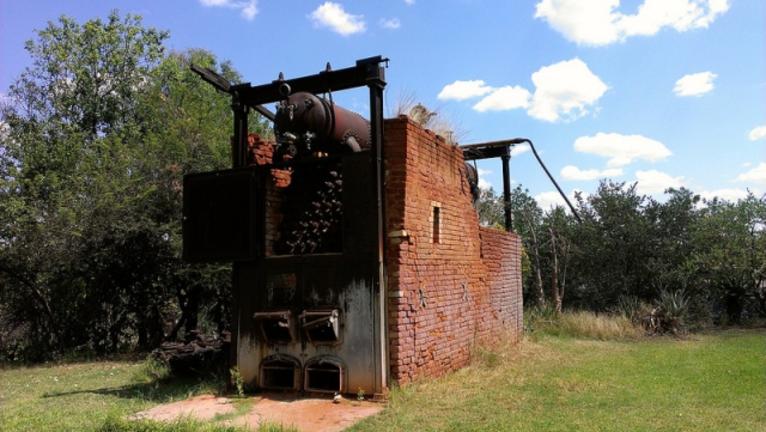Otjikoto Lake is located in Etosha East, Namibia. It has an average depth of 148 feet, and takes up a surface area of 1.3 acres. The lake was a dumping ground for German troops during World War I; German troops dumped war materials in the lake to stop the South African and British troops from using them. Most of the materials have been recovered and are displayed in Tsumeb Museum.
Tilapia guinasana, a mouth-breeding species of fish which naturally was only found in Otjikoto's sister lake, Lake Guinas, was introduced to Otjikoto Lake. The claim that lake Guinas is indeed connected to lake Otjikoto by underground caves is frequently made but not proven as yet
Meaning “deep water” in the Herero language, Lake Otjikoto is one of the few places in Namibia where groundwater comes to the surface... a sufficiently unusual circumstance to have merited attention not only by the indigenous inhabitants who have frequented the area for centuries, but by the earliest European explorers. Today it is known as the no. 1 destination for the Southern African cave-diving community, host to a couple of endangered species of endemic freshwater fish and the only underwater war museum in the world. Like its counterpart Lake Guinas, some 20 km further to the west, Lake Otjikoto is located within ~650 million years old carbonate rocks of the Damara Belt.


